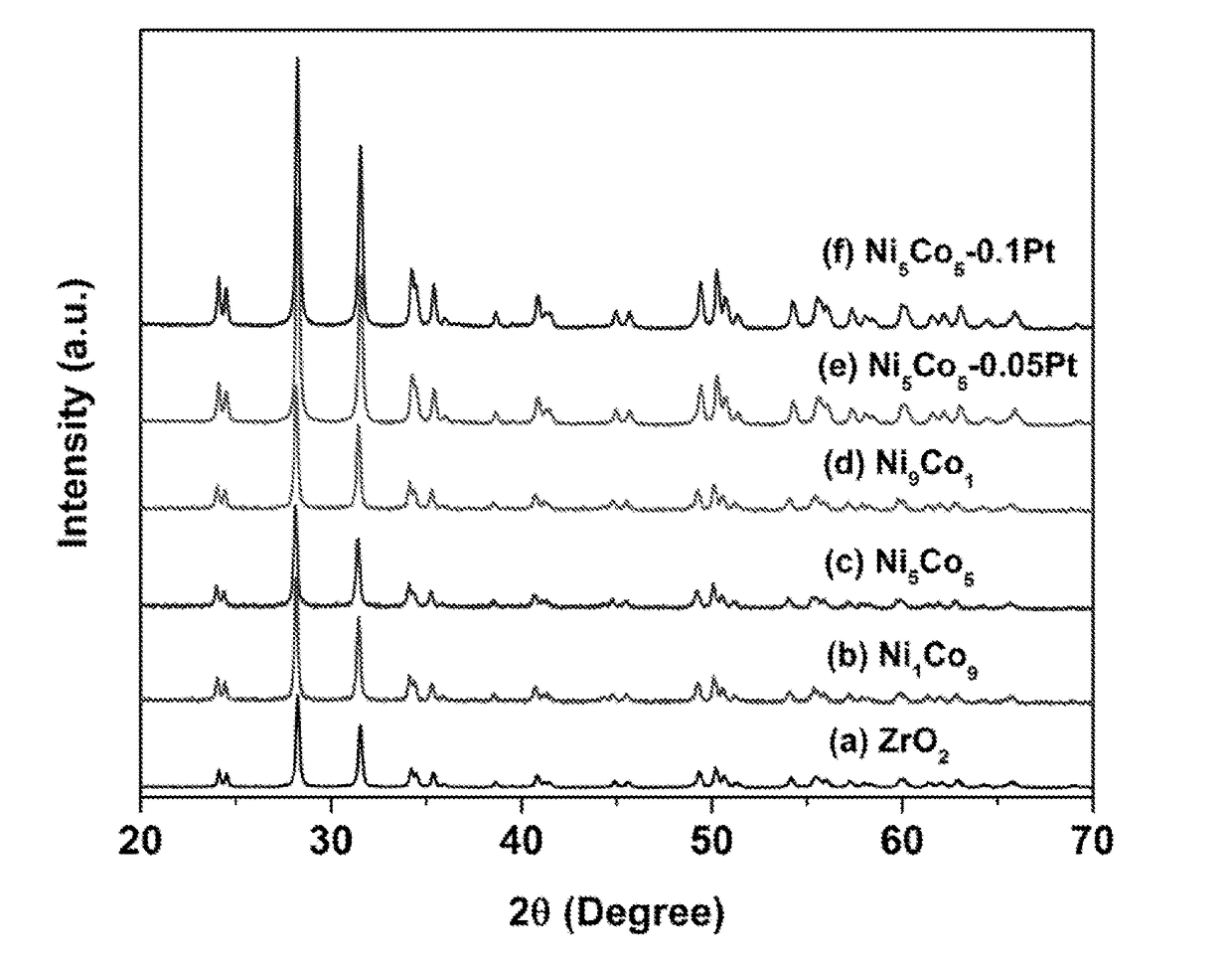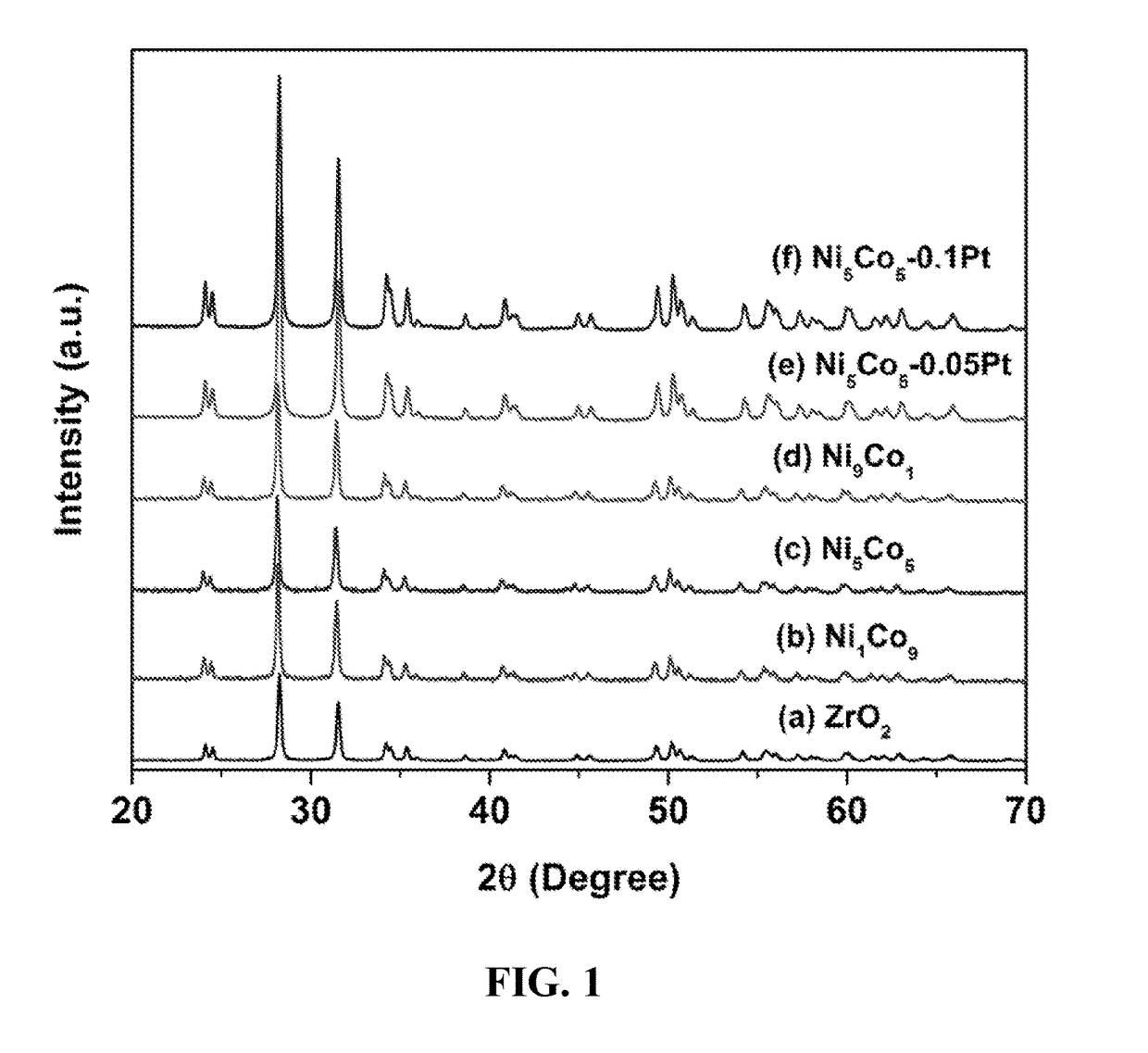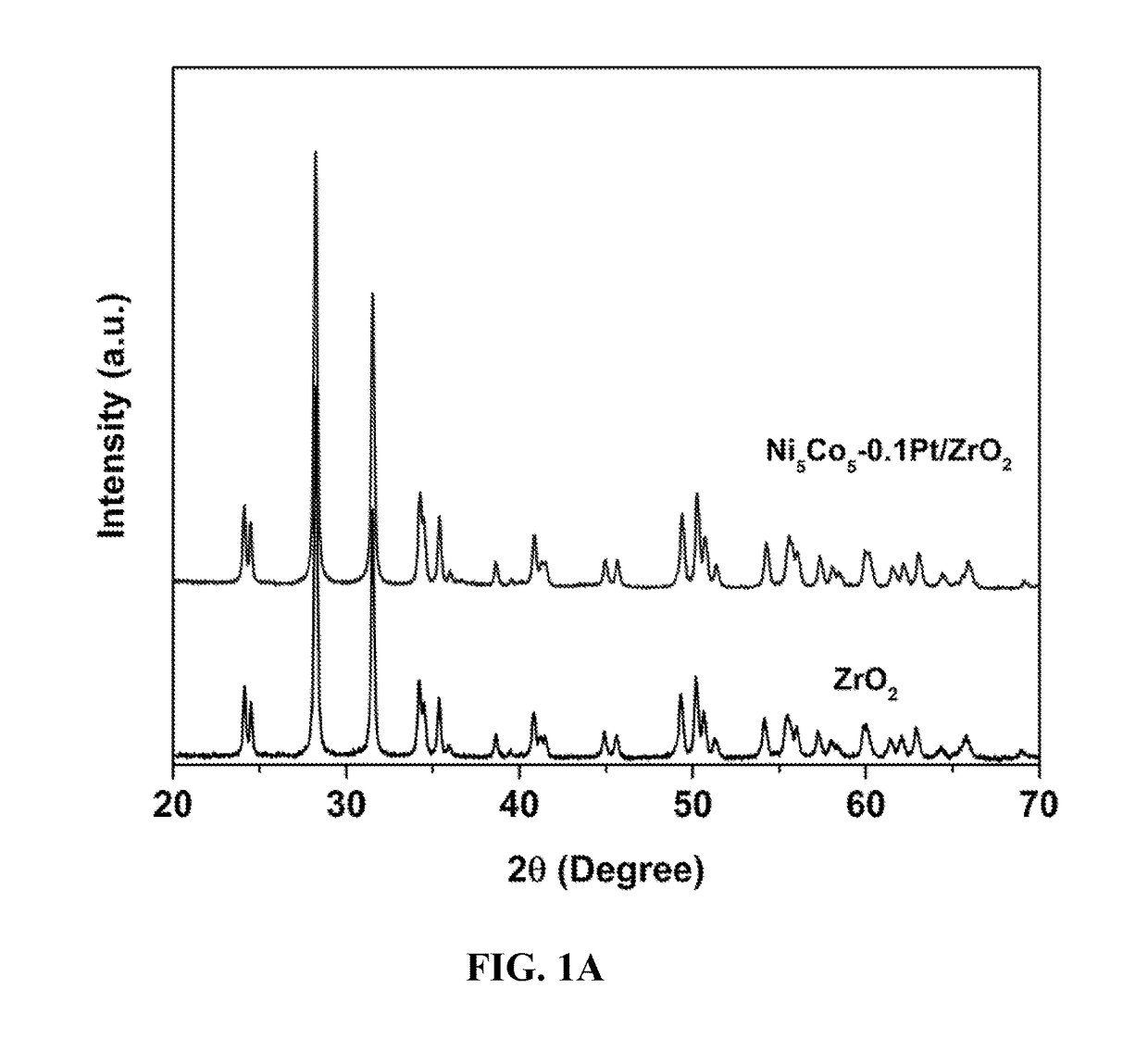Synthesis of trimetallic nanoparticles by homogeneous deposition precipitation, and application of the supported catalyst for carbon dioxide reforming of methane
a trimetallic nanoparticle and catalyst technology, applied in the field of nanoparticle catalysts, can solve the problems of nickel, high thermodynamic requirements, nickel, etc., and achieve the effects of avoiding inactivation of catalysts, reducing sintering, and high oxidative properties of transition metals
- Summary
- Abstract
- Description
- Claims
- Application Information
AI Technical Summary
Benefits of technology
Problems solved by technology
Method used
Image
Examples
example 1
Synthesis of Supported M1 and M2 Bimetallic Nanoparticles Having and M2 Dispersed Throughout the Support
[0048]Bimetallic Nanoparticle B. Urea (≧99.5% purity, 2.50 g, 41.6 mmol) was dissolved in ultra-pure water (100 ml). Under controlled atmosphere, an aqueous solution of nickel (II) chloride hexahydrate (NiCl2.6H2O 99.999% purity, 0.05 g, 0.2 mmol) and Cobalt (II) chloride hexahydrate (CoCl2.6H2O, 0.05 g, 0.21 mmol) was added, and the mixture was stirred at room temperature for 30 minutes. Calcined ZrO2 (500 mg) was added under rapid stirring (600 rpm), and the mixture was heated up to 90° C. and kept for 1 h and then cooled to room temperature. Ethylene glycol (100 ml) was added to the cooled mixture, and then heated to 150° C. and kept for 3 h. After filtering the mixture, washing the comparative catalyst with 600 ml distilled water and 100 ml ethanol, the bimetallic nanoparticle B was dried overnight at 70° C. Bimetallic nanoparticles A and C were prepared in a similar manner us...
example 2
Synthesis of Supported M1, M2, and M3 Nanoparticle Catalysts Having and M2 Dispersed Throughout the Support
[0049]Catalysts D and E. Supported nanoparticle B was co-impregnated with an aqueous solution of chloroplatinic acid hexahydrate (≧37.50% Pt basis, H2PtCl6.6H2O) at the molar ratios listed in Table 2. The NiCo was set to 5 wt % for Pt-NiCo / ZrO2 (Pt / Co=0.05 or 0.1 in molar ratio). The samples were dried at 100° C. overnight, followed by calcination at 400° C. in flowing air to obtain the nanoparticle catalysts of the present invention with a platinum particles dispersed on the bimetallic nanoparticle surface.
TABLE 2NiCoPt / CoCatalyst(mol %)(mol %)(molar ratio)D50500.05E50500.1
example 3
Prophetic Synthesis of Supported M1, M2, and M3 Nanoparticle Catalysts Having and M2 Dispersed Throughout the Support
[0050]Catalyst F. Using a surface organometallic chemistry (SOMC) method Pt could be selectively deposited on the surface of NiCo nanoparticle (e.g., supported nanoparticle B) as follows: NiCo / ZrO2 (1.0 g) can be treated at 450° C. for 3.0 h in a hydrogen flow (300 ml / min) and cooled down to room temperature in a hydrogen atmosphere. The powder can be transferred into a 100-mL Schlenk flask under hydrogen protection. Toluene solution (40 ml) of a given amount of Pt(acac)2 can be added, and the mixture can be stirred at room temperature for 20 h under hydrogen (1 atm). After filtering, washing with toluene (3×30 ml) inside the glovebox, and drying under vacuum, the nanoparticle catalyst can be obtained as powder.
PUM
| Property | Measurement | Unit |
|---|---|---|
| particle size | aaaaa | aaaaa |
| wt. % | aaaaa | aaaaa |
| particle size | aaaaa | aaaaa |
Abstract
Description
Claims
Application Information
 Login to View More
Login to View More - R&D
- Intellectual Property
- Life Sciences
- Materials
- Tech Scout
- Unparalleled Data Quality
- Higher Quality Content
- 60% Fewer Hallucinations
Browse by: Latest US Patents, China's latest patents, Technical Efficacy Thesaurus, Application Domain, Technology Topic, Popular Technical Reports.
© 2025 PatSnap. All rights reserved.Legal|Privacy policy|Modern Slavery Act Transparency Statement|Sitemap|About US| Contact US: help@patsnap.com



